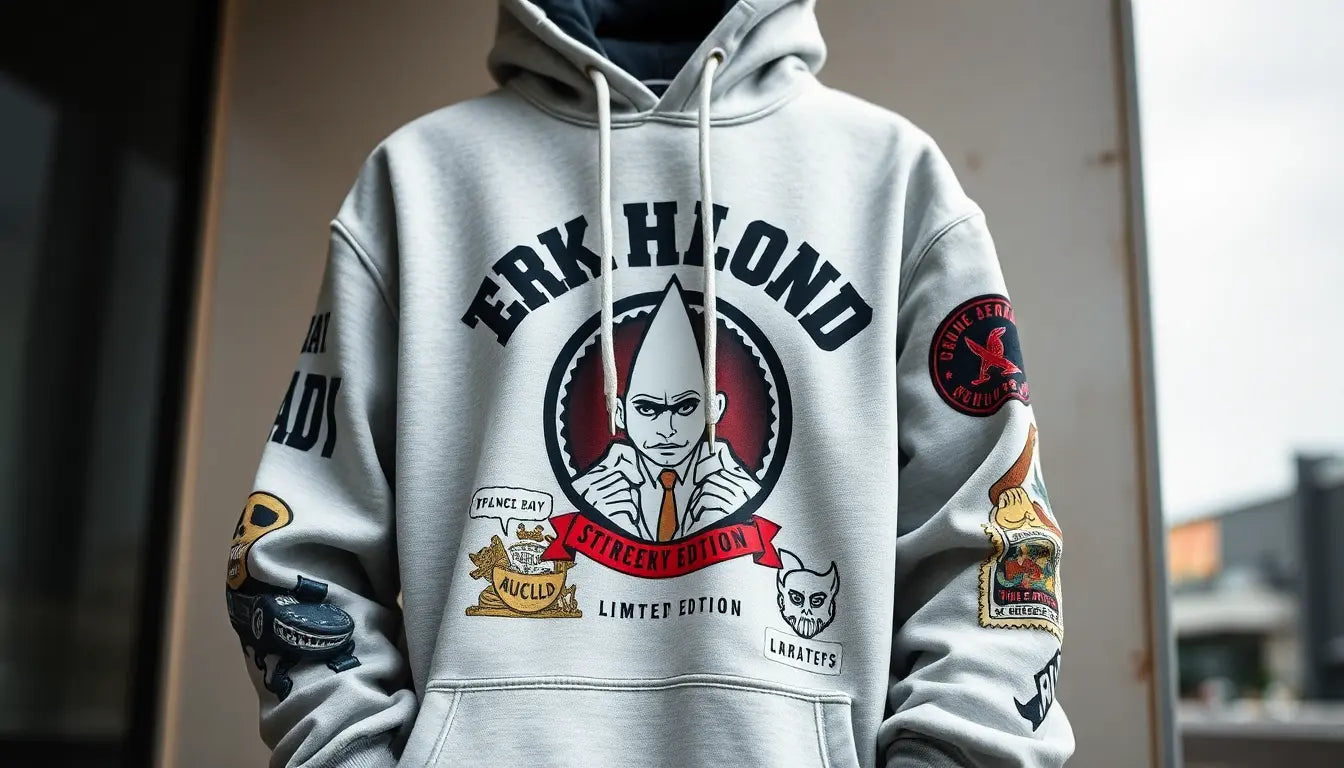
Tommy Lee Sparta Merch Mechanism: Inside the Strategy Fueling a New Wave of Dancehall Streetwear Startups
Introduction
Tommy Lee Sparta merch is a case study in how music, culture, and commerce converge to create highly desirable streetwear. Beyond sold out drops and iconic graphics, the Tommy Lee Sparta merch mechanism offers a playbook for founders, designers, and musicians who want to turn cultural capital into a sustainable fashion business. This long-form guide breaks down the strategy in exhaustive detail, covering design, drops, operations, marketing, legal considerations, and practical templates founders can use in the next 30, 90, and 365 days.
Why This Mechanism Is Relevant in 2025
Music-driven streetwear is booming because of three converging trends:
- Hyperconnected fandoms that amplify product launches in real time.
- Accessible e-commerce and manufacturing that reduce time to market.
- Global diaspora communities hungry for cultural products that express identity and affiliation.
For dancehall streetwear specifically, an artist like Tommy Lee Sparta combines distinct visual motifs, a dedicated fanbase, and frequent high-visibility performances. That combination allows limited merchandise to function like cultural artifacts, not just clothing. Startups that understand and replicate the mechanism can tap into repeatable revenue and sustained brand growth.
Foundations: Identity, Story, and Positioning
Before designing a single tee, clarifying identity is essential. Ask these foundational questions:
- What part of dancehall culture does the brand represent? Street soundsystems, lyrical bravado, ritualistic aesthetics, or festival culture?
- Which stories from the artist or scene become the brand narrative? Tours, tracks, controversies, or community contributions?
- Who is the core audience and what do they value beyond the music? Pride, nostalgia, exclusivity, or social status?
Positioning then follows identity. A Tommy Lee Sparta-style brand occupies a space between music merch and streetwear: street credible, limited in supply, rooted in narrative, and designed for visibility in social media and live events.
Design Principles: Visual Language That Speaks to Fans
Design for this niche must feel earned. Generic streetwear motifs will not suffice. Key design principles:
- Motif relevance: incorporate elements that fans recognize immediately, such as lyric fragments, album iconography, or stage symbolism.
- Bold simplicity: high contrast graphics and strong typography photograph well and work across platforms.
- Textural honesty: premium fabrics, robust stitching, and distinct garment washes signal quality and justify premium pricing.
- Limited runs and variations: colorways, artist-signed editions, and numbered pieces create collectible value.
Practical tip: produce mockups and run a short social poll among core fans to test resonance before committing to production.
Drop Mechanics: Orchestrating Scarcity and Hype
The drop is the central commercial event. It should feel like a cultural moment rather than a simple product release. The mechanism consists of three phases:
- Pre-Launch Tease: use cryptic posts, behind-the-scenes footage, and in-track visual cues to build curiosity.
- Launch Window: open sales for a short, clearly defined period or limit quantity to create urgency.
- Post-Drop Engagement: publish user-generated content, restock stories, and highlight buyers to maintain momentum.
Timing matters. Align drops with events that amplify reach: tour dates, festivals, major single or album releases, and viral social moments.
Channels and Commerce Stack
Choosing the right commerce infrastructure affects conversion, user experience, and scale. Core components of a best-in-class stack:
- E-commerce platform: Shopify for speed and apps, or headless commerce for customization at scale.
- Payments: multi-currency gateway and local payment methods for diaspora markets.
- Checkout optimization: one-click flows, guest checkout, and fast mobile performance.
- Fulfillment: integrated logistics partners with tracking and reasonable return processes.
Hybrid selling is recommended: primarily DTC plus concert pop-ups, curated retail collaborations, and selective marketplace placements for reach.
Community Activation: Turning Fans into Advocates
Community fuels repeatability. Here are approaches that scale:
- VIP programs: early access, exclusive items, and event perks for superfans.
- Micro-influencer seeding: target local scene tastemakers, DJs, and streetwear curators for authentic amplification.
- UGC campaigns: reward fan content with reposts and periodic giveaways.
- Private channels: use WhatsApp, Telegram, or Discord for intimate updates and direct pre-order opportunities.
Measurement: track referral conversions and UGC engagement to quantify the value of community channels.
Digital Marketing: High-Impact Tactics for Dancehall Streetwear
A diverse marketing mix is necessary to reach local and global audiences efficiently.
- Short-form video: create shareable clips synchronized with music, styling tips, and backstage moments.
- Paid social: target diaspora groups, cultural interest clusters, and streetwear lookalikes.
- Search and discovery: optimize product pages for long-tail queries like reggae t-shirts, dancehall hoodies, and artist name merch.
- Email and SMS: prioritized channels for drop reminders and limited restock alerts.
- PR and editorial: secure features in streetwear blogs, music magazines, and culture podcasts to build legitimacy.
SEO Best Practices for Sustained Organic Traffic
To rank and retain organic traffic, the site and content strategy must be optimized around keywords and user intent. Core recommendations:
- Keyword clusters: target artist-specific terms, product queries, and culture-driven searches like dancehall streetwear history.
- Rich content: publish long-form articles, lookbooks, and interviews that establish topical authority.
- Technical SEO: mobile-first design, fast Core Web Vitals, structured data for products, and canonicalization for limited drops.
- Local SEO: optimize for local searches around events and pop-ups with clear location pages and schema.
Pricing Strategy and Product Mix
A tiered product ladder captures the widest audience while preserving scarcity and desirability:
- Entry-level: tees, caps, and stickers priced for mass adoption.
- Mid-tier: hoodies, jackets, and printed button-ups with better materials and details.
- Limited tier: numbered editions, artist-signed pieces, and collaborations with premium pricing.
Use bundling and free shipping thresholds to increase average order value. Offer region-specific pricing and localized promotions to account for purchasing power across markets.
Manufacturing and Supply Chain Options
Choose a production strategy based on demand certainty and margin goals:
- Print-on-demand: best for testing designs with minimal inventory risk.
- Short-run local mills: faster turnaround and higher per-unit cost, but better quality control and story value.
- Bulk overseas manufacturing: lower unit cost when demand is proven; requires lead time and larger capital.
- Ethical and sustainable options: using organic cotton and fair labor practices can be a brand differentiator for certain segments.
Operational checklist: order samples, run wash tests, verify color fidelity, and review labeling and care instructions for each production method.
Fulfillment, Shipping, and Returns
Shipping experience directly affects customer satisfaction and brand reputation. Key considerations:
- Partner with fulfillment providers that offer tracking and reasonable international rates.
- Transparent shipping windows and customs information for international buyers.
- Clear return policy that balances customer experience and fraud prevention.
- Consider localized fulfillment centers in key diaspora regions to reduce delivery times and duty surprises.
Legal, Licensing, and Intellectual Property
Protecting the brand and avoiding infringement requires careful legal work:
- Trademark key logos, taglines, and brand identifiers in primary markets.
- Secure written rights for lyrics, photos, and artist likenesses used on products.
- Draft clear contracts for collaborations that define revenue splits, usage rights, and duration.
- Monitor marketplaces for counterfeiters and enforce IP rights early to prevent dilution.
Financial Model and Unit Economics
Understanding margins and break-even points helps make smarter decisions about production size and pricing. Example line items to model:
- Cost of Goods Sold per unit: blanks, printing, trims, and packaging.
- Fulfillment cost per order: pick, pack, shipping, and returns.
- Customer acquisition cost by channel: paid social, influencer seeding, and PR.
- Lifetime value projection: repeat purchase rate and average order frequency for fans.
Rule of thumb: aim for 50 percent gross margin on entry items and 65 percent or higher on limited, premium pieces once operations scale.
Customer Experience and Brand Loyalty
Exceptional unboxing and customer service convert buyers into repeat customers and brand advocates:
- Packaging: use custom tissue, stickers, and a personal note for limited purchases.
- Post-purchase flows: automated emails with styling ideas, care instructions, and community hashtags.
- Responsive support: fast replies on social and email for fulfillment questions and returns.
Scaling: From Underground Drops to a Legitimate Label
Scaling requires capital, systems, and partnerships. Steps to grow responsibly:
- Prove product-market fit through repeated sell-outs and stable metrics.
- Invest in inventory management and forecasting tools to prevent stockouts or overproduction.
- Expand team capabilities: hire a head of operations, community manager, and a creative director if demand justifies costs.
- Pursue strategic partnerships and retail collaborations to access new channels without diluting brand.
Case Study Deep Dive: Tactics That Move the Needle
Below are anonymized tactics used by successful dancehall streetwear projects that reflect elements of the Tommy Lee Sparta mechanism:
- Concert Pop-up: a 24-hour pop-up at a hometown concert that sold out the majority of stock and created social proof for international buyers.
- Track-Linked Drops: releasing a merch piece tied to a single, featured prominently in the music video and limited to the first 500 orders.
- Micro-Collab: a one-off jacket made with a well-known regional tailor, priced high and marketed as a handcrafted collector piece.
- WhatsApp Pre-Sales: a private message list where diehard fans receive pre-order links before public release, increasing conversion and reducing public server load.
Common Pitfalls and How to Avoid Them
Even well-intentioned founders make similar mistakes. Avoid these:
- Overproducing without market validation, leading to markdowns and wasted capital.
- Ignoring quality control and receiving negative reviews that harm long-term brand value.
- Failing to protect IP, allowing counterfeiters to erode authenticity.
- Underestimating shipping complexity and unexpected customs fees for international buyers.
Templates and Playbooks You Can Use Today
Below are practical templates founders can copy and adapt.
- 30-90 Day Launch Checklist:
- Day 0-15: Finalize 5 hero designs and order samples.
- Day 16-30: Seed 20 pieces to micro-influencers and collect feedback.
- Day 31-60: Run a pre-order campaign with a clearly timed drop date tied to an event.
- Day 61-90: Fulfill orders, publish UGC highlights, and analyze sell-through for restock planning.
- Influencer Brief Template:
- Campaign objective, key deliverables, usage rights, and compensation structure.
- Hashtags, tags, and timelines for posting.
- Styling suggestions and talking points tied to the artist or collection story.
- Press Pitch Outline:
- Headline: attention-grabbing angle that ties the drop to culture or an event.
- Why it matters: artist credibility, limited nature, or collaboration novelty.
- Assets: hi-res images, lookbook, and direct contact for interviews or review samples.
Analytics: What to Measure and Why
Track these metrics to make informed decisions:
- Conversion rate by traffic source: reveals where to scale spend.
- Average order value and basket composition: informs bundling and promotions.
- Sell-through rate by SKU: guides restock and discontinuation choices.
- Repeat purchase rate and churn: predicts long-term revenue and LTV.
- Acquisition cost by channel: ensures sustainable marketing economics.
Sustainability and Ethical Considerations
Many consumers increasingly demand responsible production. Ways to incorporate ethics into the mechanism:
- Source better materials: organic cotton, recycled fabrics, and lower-impact dyes.
- Transparent supply chains: publish factories and social audits when possible.
- Community reinvestment: partner with local arts programs or donate a portion of profits to scene-supporting causes.
FAQ: Quick Answers to Founder Questions
- How many products should a first drop contain? Aim for 3 to 7 SKUs to simplify fulfillment and messaging.
- What price should I set for a hoodie? Mid-tier hoodies commonly range from affordable to premium depending on market, but consider local purchasing power and shipping costs.
- Is print-on-demand viable long term? It is excellent for testing designs but less profitable for high-volume or premium pieces.
- When should I scale to bulk manufacturing? After two to three successful sell-outs or confident pre-orders that justify larger MOQ.
Conclusion: Turning Cultural Momentum into a Sustainable Business
The Tommy Lee Sparta merch mechanism is a repeatable blend of authenticity, scarcity, community, and disciplined execution. For founders in 2025, the opportunity lies in respecting cultural context while leveraging modern commerce and marketing tools. Start small, test often, protect your IP, and build genuine relationships with fans. When culture and commerce align, streetwear becomes more than clothing; it becomes a shared symbol that travels with music and memory across the globe.
Next Steps
Ready to act? Pick one design, validate it with your core community, and launch a modest pre-order tied to a cultural moment. Use the templates above, measure every metric, and adapt quickly. The mechanism is proven; now it is up to founders to execute with craft and care.


